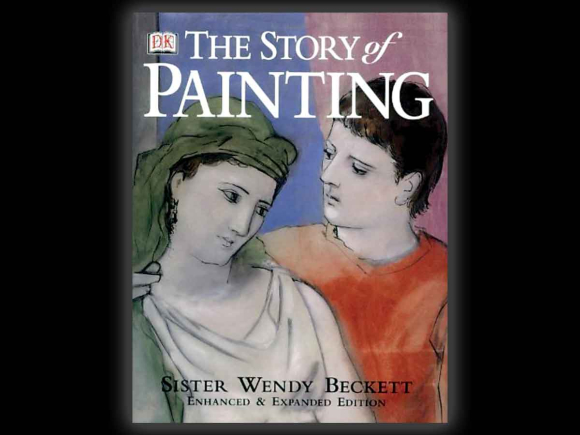Bringing Van Gogh home: the value of art books

Recently I wrote an article on the American artist Edward Hopper and his vision of solitude and alienation. Though I used the internet to hyperlink pictures of his paintings to those discussed in my essay, I also went to my local library, where — this was a bit of a miracle — I found three volumes of his work.
As I flipped through those books on Hopper, taking pleasure in the paintings, in the comparisons of his techniques with those of other artists, and in the extensive commentaries of the editors, memories of exploring other art books drifted through my mind. Ten years ago or so, I had enjoyed strolling through these collections of paintings, feasting the eye on works by artists as radically diverse as Caravaggio and Mary Cassatt.
Those Hopper books reminded me that somewhere along the road my penchant for perusing art paper and print had vanished. At almost the same time, I came to see the educational value of these books. It was Norman Rockwell rather than Hopper who taught me this lesson.
My wife loved Rockwell’s work, and as a consequence we owned two weighty books of his paintings. As our children grew into early adolescence, we shared these books with them, explaining the pictures, but mostly allowing the kids to absorb his works with limited guidance from us. Occasionally, in this same way I’ve brought his paintings to the attention of my grandchildren.
On a visit to my daughter in mid-October, I brought along a Rockwell book from the public library. My five-year-old grandson, the youngest member in this branch of the family, looked at the cover and then at a couple of paintings, and said, “I saw this Rockwell before with you, Grandpa.”
That’s the day I discovered the power of such books, their ability to bequeath to our young people beauty through painting. Just as importantly, I found that the the subject matter of art also allows us to acquaint kids with the myths, history and stories that are the foundation of our culture.
Related Items
For the younger crew, Rockwell offers a fine starting place in this endeavor. In “Norman Rockwell: A Sixty Year Perspective,” with text by Thomas Buechner, we find the wonderful painting “The Bonds of Enchantment,” where two boys lying face-to-face are reading books while above them float ethereal figures from nursery rhymes and pirate stories. Rockwell’s “The Problem We All Live With,” in which a little black girl in a white dress walks to school between federal marshals past a wall smeared with thrown tomatoes, gave me a chance to talk about racism and the Jim Crow policies of our nation 70 years ago.
For interested teenagers, books like Sister Wendy Beckett’s “The Story of Painting,” which I also own, is an excellent comprehensive guide not only to Western art, but to its history as well. Here we find written explorations of the past, the stories of saints and Biblical figures employed by painters over the centuries, and the ongoing commentary by a nun who over her lifetime became a serious student of art. The Civil War paintings of Mort Künstler might heighten a high schooler’s interest in that bloody struggle between North and South. And if these same students, or for that matter, any of the rest of us, want more information on a particular artist, Francesco Goya for example, or James Whistler, they can easily search out paintings and biographical particulars online.
Such art can also inspire the stories we tell the little ones at bedtime. Many parents read to their children, almost always from illustrated books, and the stories we find in paintings may prove to be the perfect springboard for entertainment as well. Diego Velazquez’s “Las Meninas” (the maids of honor) with its crowded room may raise questions and speculation: Who are these young women? Who is the man in black standing in the doorway? Why might a nun be there? (For the very young, we might explain what a nun is.) Even a painting so lacking in action and so tranquil as Fragonard’s “A Young Girl Reading” might give rise to discussion and the chance for a parent to invent a story for the girl and her book.
For the rest of us, contemplating the paintings of artists like Rembrandt, Renoir, or Rosa Bonheur deepens the soul and the meaning of the world around us. The mother who has lost a child surely looks at Michelangelo’s “Pieta” with different eyes than most other viewers of that statue. Renoir’s “The Boating Party Lunch” may remind an old man of the keg parties of his youth, when the promises of the future looked as bright and sure as the faces of those in this painting.
At any rate, winter is already tapping at the door, and browsing books of art can be wonderfully fortifying when frost silvers the lawn and a North wind is rattling the branches on the trees. Open up one of those colorful volumes, pour yourself a glass of wine or a cup of hot chocolate, invite a companion or two — a friend, a lover, a child — to share this moment, and comfort and a quiet joy are almost guaranteed.
(Jeff Minick reviews books and has written four of his own: two novels, “Amanda Bell” and “Dust On Their Wings,” and two works of nonfiction, “Learning As I Go” and “Movies Make the Man.” This email address is being protected from spambots. You need JavaScript enabled to view it.)









